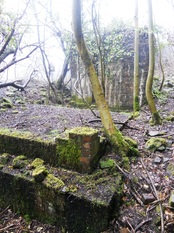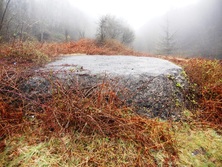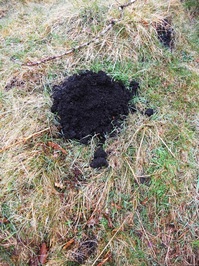
Ruins of Cwmgwineu Colliery
Iron, copper, coal and steel. These are the industries that shaped Port Talbot. Steel remains but traces of the others are still held by the land. A remembrance of times past.
Cwmgwineu Colliery in Cwm Dyffryn, above Goytre, opened at the end of the 19th century. Two seams of coal, Rock Fach and Rock Fawr, were mined over the years and the economic path of the mine is captured in the number of men who worked there: seven in 1899, four in 1901. In 1923 there were 120 men working underground and 89 men on the surface. There were 500 working there in 1926. It closed in 1927.
Cwmgwineu Colliery in Cwm Dyffryn, above Goytre, opened at the end of the 19th century. Two seams of coal, Rock Fach and Rock Fawr, were mined over the years and the economic path of the mine is captured in the number of men who worked there: seven in 1899, four in 1901. In 1923 there were 120 men working underground and 89 men on the surface. There were 500 working there in 1926. It closed in 1927.

One of the capped mine shafts
You can still see the ruins today: two capped mine shafts, the rubble of engineering bricks, and some broken walls just above the footpath that leads to Cwmwernderi Reservoir, opened in 1902 to supply water to Port Talbot. You can't miss it: a brick wall on the left invites you to scamper up the slope and poke around.

Coal mole
The only creatures digging here today are much smaller but also accustomed to the hard seeping dampness that still broods in our mountains.
Source: The Collieries of the Afan Valley and the Port Talbot Areas, Ray Lawrence BSc., privately published 2008.
Source: The Collieries of the Afan Valley and the Port Talbot Areas, Ray Lawrence BSc., privately published 2008.


 RSS Feed
RSS Feed